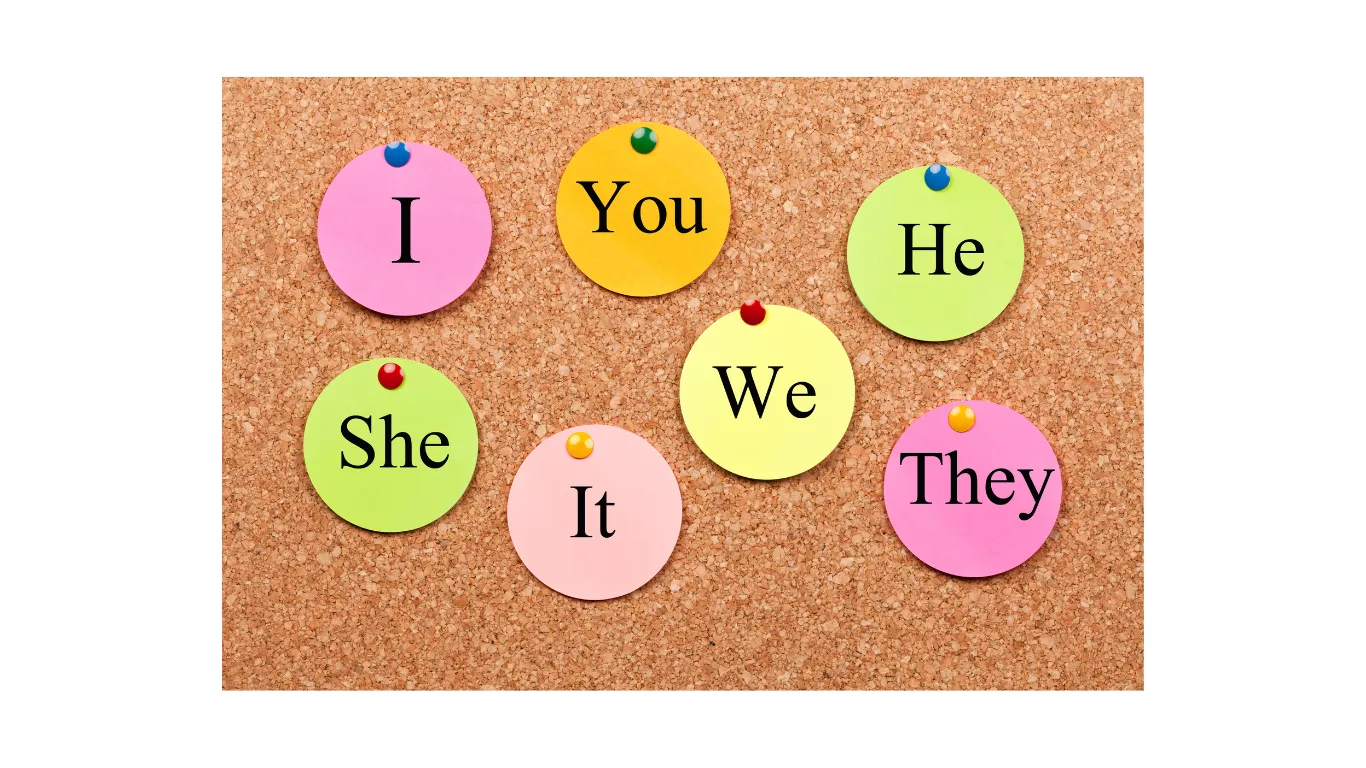Tenrycolle.com
What better to do than, share your English knowledge with other people
What better to do than, share your English knowledge with other people
What better to do than, share your English knowledge with other people

Personal pronouns are pivotal in simplifying and enhancing how we express ourselves. These small but powerful words are essential tools for clarity and conciseness in our conversations and written texts. In this article, we will explore the various types that enable us to navigate the intricacies of language easily.
Read also: Definition and Types of English Verbs
A personal pronoun represents specific people, objects, or things, often without repeating their names or nouns. There are 7 types of personal pronouns, as follows:
The words I, you, he, she, it, we, and they are called personal pronouns. These pronouns are used as the subject of a sentence, indicating who is acting. They are used to avoid repetition or when a name is unknown.
| Group of Pronouns | Subject |
| First-person singular | I |
| Second person singular | You |
| Third person singular | He |
| Third person singular | She |
| Third person singular | It |
| First-person plural | We |
| Second person plural | You |
| Third person plural | They |
The words me, you, him, her, it, us, and them are also personal pronouns. They also take the place of nouns. These pronouns are used as the object of the verb in the sentence.
The object of a sentence is the person, animal, place, or thing that receives the action shown by the verb.
| Group of Pronouns | Object |
| First-person singular | Me |
| Second person singular | You |
| Third person singular | Him |
| Third person singular | Her |
| Third person singular | It |
| First-person plural | Our |
| Second person plural | You |
| Third person plural | Them |
These pronouns indicate ownership or possession and replace nouns to show that something belongs to a particular person or thing.
| Group of Pronouns | Possessive |
| First-person singular | My |
| Second person singular | Your |
| Third person singular | His |
| Third person singular | Her |
| Third person singular | Its |
| First-person plural | Our |
| Second person plural | Your |
| Third person plural | Their |
Reflexive pronouns show that the subject of a verb is the same as its object. They end in “-self” (singular) or “-selves” (plural). The words myself, yourself, himself, herself, itself, ourselves, yourselves, and themselves are reflexive pronouns.
| Group of Pronouns | Reflexive Pronouns |
| First-person singular | Myself |
| Second person singular | Yourself |
| Third person singular | Himself |
| Third person singular | Herself |
| Third person singular | Itself |
| First-person plural | Ourselves |
| Second person plural | Yourselves |
| Third person plural | Themselves |
Indefinite pronouns, such as anyone, someone, and everyone, refer to a person or object or a group of people or things without explaining who or what they are.
Where nothing is used in a positive statement, anything can be used in a negative statement with the same meaning.
The words who, whom, whose, what, and which are called interrogative pronouns. These pronouns are used to ask questions.
The words this, these, that, and those are called demonstrative pronouns. They point to specific people or things in a sentence, helping to identify them.
Demonstrative pronouns can be singular or plural:
| Singular | Plural |
| This | these |
| That | those |
A reflexive pronoun can only be used if the subject and object of the sentence are the same. If the object differs from the subject, an object pronoun should be used instead.
√ My boss invited Joe and me to the meeting.
× My boss invited myself and Joe to the meeting